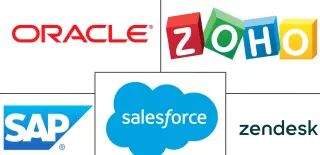How eSports orgs make money: business breakdown

The global esports industry is projected to reach $3.8 billion by 2025, with top organizations generating millions annually through diverse revenue streams. From sponsorships and media rights to merchandising and content creation, this guide breaks down exactly how esports teams monetize their operations—with real-world examples from FaZe Clan, TSM, and G2 Esports.
eSports Revenue Statistics (2024)
60%
of org revenue comes from sponsorships
$25M
average valuation for Tier 1 esports orgs
12x
higher merch sales than traditional sports teams (per fan)
1. Sponsorships & Brand Deals (Primary Income)
Sponsorship Types & Earnings
| Category | Deal Value | Example Partners |
|---|---|---|
| Gaming Hardware | $500K-$5M/year | Logitech, Razer, NVIDIA |
| Energy Drinks | $1M-$10M/year | Red Bull, Monster, G FUEL |
| Apparel | $250K-$2M/year | Nike, Adidas, Champion |
| Crypto/NFT | $1M-$20M (one-time) | FTX, Crypto.com |
How Orgs Secure Sponsorships
- Jersey branding (Logo placement during tournaments)
- Content integrations (Sponsored YouTube/TikTok videos)
- Product development (Co-branded gaming peripherals)
2. Tournament Winnings & League Revenue
Prize Pools
- The International (Dota 2): $40M+ total
- LoL Worlds: $2.5M+ to winner
- Orgs typically take 10-20% of player winnings
Franchise Leagues
- LCS (LoL): $10M+ buy-in
- CDL (CoD): $25M franchise spots
- Revenue sharing from media rights
3. Content & Media Rights
YouTube/Twitch
$3-$20 CPM
- Team-owned channels
- Player streaming deals
Broadcast Deals
$50K-$5M/year
- Twitch exclusives
- TV networks (ESPN, BBC)
Documentaries
$100K-$1M/project
- Netflix/Amazon partnerships
- Behind-the-scenes content
4. Merchandise & Apparel
- Jerseys: $60-$120 each (30-50% profit margin)
- Limited drops: Collabs with streetwear brands
- Digital merch: In-game skins (e.g., Team Liquid CS:GO)
5. Fan Monetization
Membership Models
Premium Discord
$5-$20/month for exclusive Q&As
NFT Collectibles
100 Thieves' "Bunny" NFTs sold for $1.6M
Subscription Platforms
Patreon for team analytics/content
6. Diversification Strategies
Game Development
- TSM's Blitz app (10M+ downloads)
- FaZe Clan's mobile games
Talent Agencies
- Managing streamers & pros
- 20-30% of earnings
Financial Challenges
- High player salaries: $300K-$2M/year for stars
- Travel costs: $500K+/year for int'l teams
- Sponsorship volatility: Crypto crash lost orgs ~$150M
FAQs
How profitable are esports orgs?
Only 30% turn a profit. Most rely on investor funding while building long-term value.
What's the biggest revenue source?
Sponsorships (60%), followed by media rights (15%) and merch (10%).
Industry Insight:
Top orgs now operate as "entertainment companies"—G2 Esports earns 40% from content, not competitions. Diversification is key to sustainability.
You might also like
Popular Articles

How to Price Your Indie Game for Maximum Profit (Steam vs Itch.io vs Epic)

How to sell game assets on Unity Store

From Hobby to Profit: How to Turn Your Gaming Passion Into a $100K Business

Best business setup for content creators (LLC vs Sole Proprietor)

AI Video Editing Tools Tested: Which Actually Save Time?
